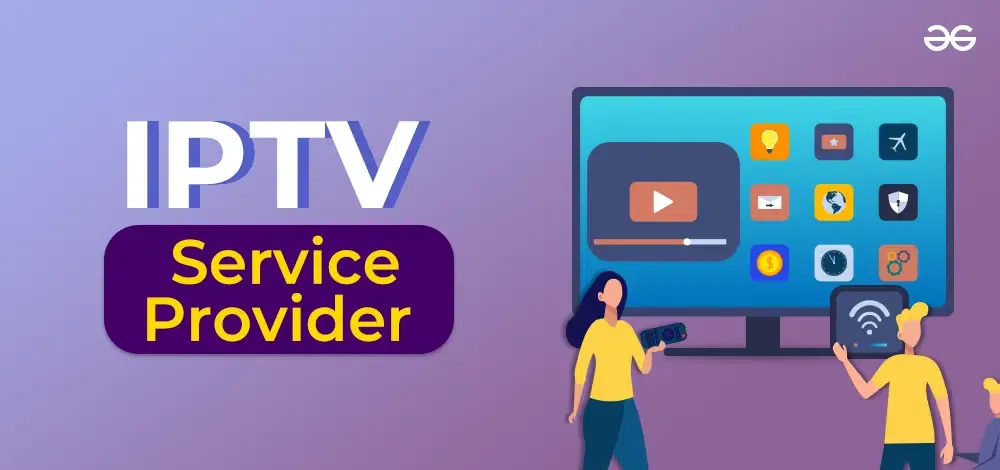Stay Connected to Your Faves: Safeguard Your IPTV Subscription Today!
Stay Connected to Your Faves: Safeguard Your IPTV Subscription Today!
Blog Article
Exactly How IPTV Works: A Step-by-Step Overview to Internet Method Television Modern Technology
Web Method Tv (IPTV) has transformed the method we eat tv web content, using a brand-new world of opportunities through the power of the net. From the basic concepts of IPTV to the complex procedure of web content delivery, each step plays a critical function in making sure a smooth watching experience.
IPTV Basics
In understanding IPTV basics, it is critical to understand the essential functions of this modern technology in supplying tv web content online. IPTV, which represents Net Method Tv, makes use of Web Procedure (IP) networks to transfer television content to customers' tools. Unlike typical approaches of relaying television material through cable or satellite signals, IPTV streams media through high-speed internet links.

Furthermore, IPTV permits for interactive capacities, such as video clip as needed (VOD) and electronic program guides (EPG), improving the individual experience by providing even more control and versatility in accessing web content. Generally, understanding the fundamentals of IPTV establishes the foundation for exploring its advanced performances and the advantages it uses to modern tv usage.
Content Shipment Process
Effective content distribution in IPTV systems involves a well-structured procedure that guarantees smooth transmission of television web content over IP networks. The material distribution process in IPTV starts with the creation of the video clip content, which is then encoded right into digital layout suitable for IP transmission. This inscribed web content is then firmly stored on web servers referred to as media servers. When a visitor requests certain content, the IPTV system gets the requested data from the media web servers and delivers it to the audience's tool over the internet.

Middleware Functionality
With the integration of middleware, IPTV systems gain boosted capability that simplifies customer interaction and content monitoring. One of the essential functions of middleware in IPTV is to enable tailored user experiences by supplying attributes such as interactive program overviews, video-on-demand solutions, interactive marketing, and individual choices administration.

Gadget Compatibility
Provided the critical function of middleware in allowing seamless interaction and content management in IPTV systems, an important element to consider is the compatibility of devices used for accessing the IPTV solutions. Tool compatibility is crucial for making certain a smooth customer experience and ideal performance when accessing IPTV content.
In the context of IPTV, device compatibility describes the capacity of a gadget to Read Full Report efficiently communicate with the IPTV service, display material appropriately, and sustain the required protocols and codecs for streaming video clip material over the web. Different tools, such as clever TVs, set-top boxes, smartphones, tablet computers, and computers, may have differing levels of compatibility with IPTV services.
To make sure a seamless watching experience, it is very important for individuals to pick devices that work with the particular IPTV solution they are making use of. In addition, IPTV solution providers need to use support for a variety of devices to accommodate the diverse demands of their individual base. By focusing on gadget compatibility, both customers and provider can improve the overall IPTV experience.
High Quality of Service (QoS)
Taking into consideration the vital role of preserving a high standard of performance and integrity in IPTV systems, making sure regular High quality of Solution (QoS) remains an essential aspect of the individual experience. QoS in IPTV describes the ability of the system to provide web content with minimal interruptions, high resolution, and quickly loading times. To accomplish optimum QoS, various aspects require to be dealt with. Network bandwidth is vital to sustain top quality video clip streaming without buffering or pixelation. In addition, latency, jitter, and packet loss should be lessened to boost the watching experience.
Provider utilize QoS systems such as web traffic prioritization, buffering, and error correction to maintain a secure IPTV solution. By prioritizing IPTV traffic over less time-sensitive information, carriers can make sure smooth playback even during peak Check This Out use hours. Buffering assists make up for network fluctuations, while mistake modification methods enhance information honesty.
Continuous tracking and optimization of QoS parameters are vital to adapt to transforming network problems and individual demands. Inevitably, a durable QoS structure is crucial for providing a smooth and enjoyable IPTV experience to users.
Conclusion
In final thought, IPTV runs through the transmission of tv web content over internet procedure networks. Top quality of Service plays a vital role in preserving the performance and reliability of IPTV services - IPTV subscription.
Report this page